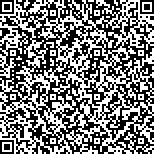| 引用本文: | 张培炎,王晨慧,蒋香云,康东珠,李宏运,刘占军,罗琳,陈勇.基于透皮离子导入技术的戒烟药物金雀花碱的可控递送研究[J].中国现代应用药学,2022,39(8):1026-1032. |
| ZHANG Peiyan,WANG Chenhui,JIANG Xiangyun,KANG Dongzhu,LI Hongyun,LIU Zhanjun,LUO Lin,CHEN Yong.Study of Controllable Delivery of Smoking Cessation Drug Cytisine Using Transdermal Iontophoresis[J].Chin J Mod Appl Pharm(中国现代应用药学),2022,39(8):1026-1032. |
|
| |
|
|
| 本文已被:浏览 1616次 下载 837次 |

码上扫一扫! |
|
|
| 基于透皮离子导入技术的戒烟药物金雀花碱的可控递送研究 |
|
张培炎1, 王晨慧1, 蒋香云1,2, 康东珠1, 李宏运1, 刘占军2, 罗琳1, 陈勇1
|
|
1.南通大学药学院, 江苏 南通 226001;2.华北理工大学药学院, 河北 唐山 063210
|
|
| 摘要: |
| 目的 探索烟碱乙酰胆碱受体部分激动剂金雀花碱(cytisine,CTS)经阳极离子导入透过离体猪皮。方法 采用HPLC-PDA建立并验证CTS的分析方法。研究了电流密度、药物浓度和药物基质对CTS透皮离子导入的影响。采用标志物对乙酰氨基酚解析CTS离子导入过程中电迁移和电渗的贡献。结果 CTS从水溶液中被动透皮不佳,但在离子导入条件下CTS的透皮递送量显著增加,将电流密度从0.15 mA·cm–2增加到0.5 mA·cm–2可使离子导入CTS的稳态流量呈线性增加(J=452.8I+31.51,r=0.998 3)。在使用0.5 mA·cm–2电流密度的条件下,给药池药物浓度的增加(2.5,5.0,10.0 mg·mL–1)可使累积透皮递送量显著增加。共离子导入对乙酰氨基酚证实了电迁移是CTS的主要递送机制(˃90%)。CTS的传导效率良好(6.63%~8.82%)。递送效率,即递送药物占所给予的制剂中的药物的百分数较高(在0.5 mA·cm–2时>40%)。CTS从离子导入贮库HEC水凝胶中递送时的累积透皮递送量为(1 551.94±322.19)μg×cm–2,与从CTS溶液中递送时的累积透皮递送量无统计学差异。结论 体外数据表明,使用较小面积的凝胶贴片通过透皮离子导入可以方便地递送治疗剂量的CTS。 |
| 关键词: 金雀花碱 透皮递送 离子导入 电迁移 |
| DOI:10.13748/j.cnki.issn1007-7693.2022.08.004 |
| 分类号:R94;R285.5 |
| 基金项目:国家自然科学基金项目(81603044);南通市科技计划项目(JC2021117);江苏省研究生科研与实践创新计划项目(SJCX21_1481,KYCX20_2856) |
|
| Study of Controllable Delivery of Smoking Cessation Drug Cytisine Using Transdermal Iontophoresis |
|
ZHANG Peiyan1, WANG Chenhui1, JIANG Xiangyun1,2, KANG Dongzhu1, LI Hongyun1, LIU Zhanjun2, LUO Lin1, CHEN Yong1
|
|
1.School of Pharmacy, Nantong University, Nantong 226001, China;2.School of Pharmacy, North China University of Science and Technology, Tangshan 063210, China
|
| Abstract: |
| OBJECTIVE To investigate the anodal iontophoresis of a partial agonist of nicotinic acetylcholine receptor cytisine(CTS) across porcine skin in vitro. METHODS Analytical method of CTS was developed and validated by using HPLC-PDA. The effect of current densities, drug concentrations and drug reservoir on iontophoretic delivery of CTS across skin was investigated. Acetaminophen was used as a marker to deconvolute the contribution of electromigration and electroosmosis during iontophoresis of CTS. RESULTS Passive delivery of CTS from aqueous solution was minimal; however, application of iontophoresis significantly enhanced the transdermal delivery of CTS, and increasing current density from 0.15 mA·cm-2 to 0.5 mA·cm-2 produced a linear increase in steady-state iontophoretic flux of CTS (J=4 52.8I+31.51, r=0.998 3). In the presence of a current of 0.5 mA·cm-2, the increase in donor concentration (2.5, 5.0 and 10.0 mg·mL-1) produced a statistically significant increase in cumulative permeation. Co-iontophoresis of acetaminophen confirmed that electromigration was the dominant transport mechanism for CTS(˃90%). Transport efficiencies for CTS were good(6.63%-8.82%). Furthermore, the delivery efficiencies, i.e., the fraction of the drug in the formulation that was delivered were high(>40% at 0.5 mA·cm-2). Cumulative permeation of CTS from HEC hydrogel, a drug reservoir for iontophoretic systems, was (1 551.94±322.19)μg×cm-2; this was statistically equivalent to that from solution. CONCLUSION The results demonstrate that therapeutic amounts of CTS can be easily delivered by transdermal iontophoresis with hydrogel patches of modest surface area. |
| Key words: cytisine transdermal delivery iontophoresis electromigration |
|
|
|
|
